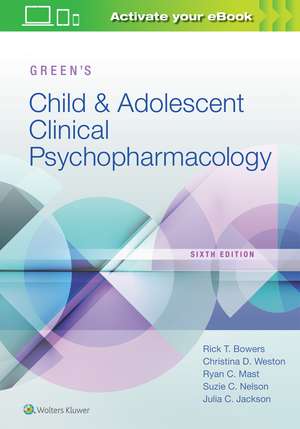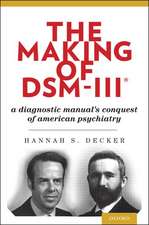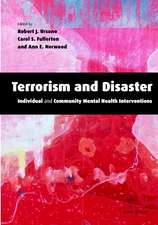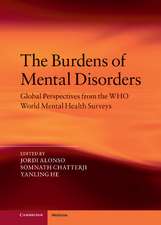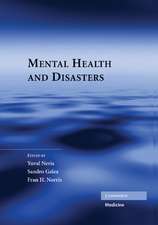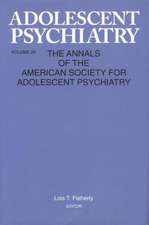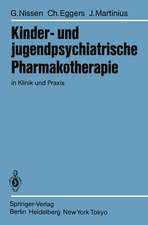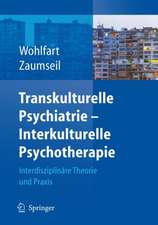Green's Child and Adolescent Clinical Psychopharmacology
Autor Rick Bowers, Julia Jackson, Christina Westonen Limba Engleză Paperback – 25 oct 2018
The sixth edition of this classic text continues to provide clinically-oriented information on medications used to treat common mental health conditions and disorders in children and adolescents. The book boasts an accessible style—with even more tables, graphs, and clinical pearls than ever before—that is designed for easy reading and comprehension. Substantially updated with expanded medication coverage for new FDA approved indications, this practical guide is perfect for residents and practitioners in psychiatry and pediatrics, as well as family medicine.
- Emphasizes new and highly used medications and discusses FDA-approved and off-label usage.
- Adds new chapters on de-prescribing and managing substance use disorders in adolescents.
- Beefs up coverage of injectable medications and third-generation anti-psychotics as well as weight stabilization medications.
- Prominently displays precautions and warnings to mitigate prescribing errors and adverse interactions.
- Read directly on your preferred device(s), such as computer, tablet, or smartphone.
- Easily convert to audiobook, powering your content with natural language text-to-speech.
Preț: 603.07 lei
Preț vechi: 743.88 lei
-19% Nou
Puncte Express: 905
Preț estimativ în valută:
115.41€ • 125.32$ • 96.95£
115.41€ • 125.32$ • 96.95£
Carte disponibilă
Livrare economică 04-16 aprilie
Preluare comenzi: 021 569.72.76
Specificații
ISBN-13: 9781975105600
ISBN-10: 1975105605
Pagini: 456
Dimensiuni: 178 x 254 x 26 mm
Greutate: 0.73 kg
Ediția:Sixth
Editura: LWW
Colecția Lww
ISBN-10: 1975105605
Pagini: 456
Dimensiuni: 178 x 254 x 26 mm
Greutate: 0.73 kg
Ediția:Sixth
Editura: LWW
Colecția Lww
Recenzii
In this sixth edition of a practical and well-organized guide to psychopharmacology in children and adolescents, the authors provide updated evidence and guidelines for the clinical use of psychotropic medications as well as added information about medications more recently accepted for use with pediatric populations.
This edition aims to provide practical clinical information about the evidence for the prescribing of psychotropic medications for children with mental health disorders, while keeping an open mind to nonpharmacological treatments in a psycho-social-cultural context. Well-organized guidelines for dose-titration, maintenance, discontinuing, and even de-prescribing occupy the bulk of this book.
The book is intended primarily for clinicians who are actively participating in treating children and adolescents with psychotropic medications for mental health disorders. Specifically, psychiatrists (both general and child and adolescent), pediatricians, family medicine doctors, psychologists with prescribing privileges, physician assistants, nurse practitioners, and advanced practice nurses all could benefit from this book. Trainees including medical and nursing students also would likely find this book helpful.
The first of the book's two main sections introduces general principles of diagnosing and treating psychiatric illness in the pediatric population and provides some very useful flowcharts for treatment options for various disorders common to children and adolescents. The second section is much more comprehensive and presents clinically relevant information about prescribing, titrating, discontinuing, and monitoring of specific medications, divided into general drug classes. The book also includes practical tips for managing adverse effects, including strategies to prevent or reverse metabolic changes such as obesity in children on psychotropic medications. As in previous editions, the book continues to outline FDA black box and bold print warnings, specific indications, and outlines of landmark research pertaining to the medications. For medications commonly used for non-FDA-approved indications, this book outlines the available evidence for off-label use as well. The book is neatly organized, featuring intuitive charts, tables, and highlighted pearls, in addition to paragraph-form discussion. One thing this book does not include is more in-depth information about the pharmacokinetics/pharmacodynamics of most drugs, information that can be obtained in more comprehensive psychopharmacology books.
This is a pragmatic and succinct guide for clinicians prescribing psychotropic medications to children and adolescents. As a reference, the book is easy to use and well organized. This edition has added information about new psychotropic medications as well as new formulations and uses for medications included in previous editions. For readers who prefer a hybrid of quick-and-dirty charts and tables plus more in-depth clinical information, this book would make a good addition to their office book collection.
Weighted Numerical Score: 86 - 3 Stars
This edition aims to provide practical clinical information about the evidence for the prescribing of psychotropic medications for children with mental health disorders, while keeping an open mind to nonpharmacological treatments in a psycho-social-cultural context. Well-organized guidelines for dose-titration, maintenance, discontinuing, and even de-prescribing occupy the bulk of this book.
The book is intended primarily for clinicians who are actively participating in treating children and adolescents with psychotropic medications for mental health disorders. Specifically, psychiatrists (both general and child and adolescent), pediatricians, family medicine doctors, psychologists with prescribing privileges, physician assistants, nurse practitioners, and advanced practice nurses all could benefit from this book. Trainees including medical and nursing students also would likely find this book helpful.
The first of the book's two main sections introduces general principles of diagnosing and treating psychiatric illness in the pediatric population and provides some very useful flowcharts for treatment options for various disorders common to children and adolescents. The second section is much more comprehensive and presents clinically relevant information about prescribing, titrating, discontinuing, and monitoring of specific medications, divided into general drug classes. The book also includes practical tips for managing adverse effects, including strategies to prevent or reverse metabolic changes such as obesity in children on psychotropic medications. As in previous editions, the book continues to outline FDA black box and bold print warnings, specific indications, and outlines of landmark research pertaining to the medications. For medications commonly used for non-FDA-approved indications, this book outlines the available evidence for off-label use as well. The book is neatly organized, featuring intuitive charts, tables, and highlighted pearls, in addition to paragraph-form discussion. One thing this book does not include is more in-depth information about the pharmacokinetics/pharmacodynamics of most drugs, information that can be obtained in more comprehensive psychopharmacology books.
This is a pragmatic and succinct guide for clinicians prescribing psychotropic medications to children and adolescents. As a reference, the book is easy to use and well organized. This edition has added information about new psychotropic medications as well as new formulations and uses for medications included in previous editions. For readers who prefer a hybrid of quick-and-dirty charts and tables plus more in-depth clinical information, this book would make a good addition to their office book collection.
Weighted Numerical Score: 86 - 3 Stars
Descriere
The sixth edition of this classic text continues to provide clinically-oriented information on medications used to treat common mental health conditions and disorders in children and adolescents. The book boasts an accessible style—with even more tables, graphs, and clinical pearls than ever before—that is designed for easy reading and comprehension. Substantially updated with expanded medication coverage for new FDA approved indications, this practical guide is perfect for residents and practitioners in psychiatry and pediatrics, as well as family medicine.
